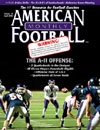AMERICAN FOOTBALL MONTHLY THE #1 RESOURCE FOR FOOTBALL COACHES
Article CategoriesAFM Magazine
|
Techniques for \'Effective\' Cover 2by: Tim CooperDefensive Backs Coach, Miami University (OH) © More from this issue The topic of this article is on playing ‘effective’ Cover 2 techniques. We need to first look at what our idea of effective means. This is crucial in how you teach the LBs and DBs to play their techniques, especially the corners. I truly believe you have to make a decision on what you want Cover 2 to do for you. Do you want to run Cover 2 to help in the pass game or to stop the run? To play effective Cover 2, I believe you need to emphasize one or the other. You can do both; however, you need to have a starting point that is considered your ‘base’ way of playing the technique. You can always add ‘change ups’ or ‘tags’ to change the technique. For us at Miami we think of effective Cover 2 as forcing the offense to throw to the underneath zones where we can pursue up and tackle the ball carrier for a very short gain. Subscribe today!
|
|
|||||||
| HOME |
MAGAZINE |
SUBSCRIBE | ONLINE COLUMNISTS | COACHING VIDEOS |
Copyright 2025, AmericanFootballMonthly.com
All Rights Reserved





